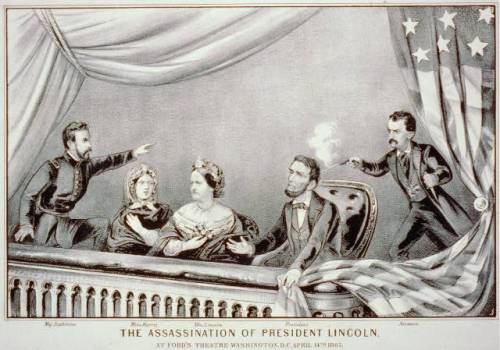From The New York Times, June 15, 2009:
$431,000 Paid for Envelope and Its Stamp
An envelope from an 1873 letter bearing a scarce 90-cent stamp with Abraham Lincoln fetched more than $431,000 at an auction in New York City on Saturday.
The envelope, or cover, as collectors call used envelopes, was sold by Siegel Auction Galleries.

The 1873 letter bearing the scarce 90-cent Lincoln stamp
Known to collectors as the Ice House Cover, the envelope, which traveled by ship from New York to India, is the only one collectors have found still bearing the red and black stamp with Lincoln on it. Last traded publicly in 1943, then stolen and long thought to have been lost to philately, the cover was seized by the Federal Bureau of Investigation in 2006 and returned, after a court battle, to the heirs of J. David Baker, its last owner.
The letter was sent from a New England ice merchant to one of his ice warehouses in Calcutta, then part of Britain’s East Indies colony. It was franked with a total of $1.12, a large sum of money in those days, which paid the two-ounce foreign letter rate.
Markings on the envelope reveal that it traveled across the Atlantic, by train through Germany and Italy, by ship to Egypt and again from Suez to Bombay, and then by train across India. Before the advent of the Universal Postal Union the next year, the sum reflected rates negotiated between the United States and Britain to encourage growing international trade. Indeed, the commercial success of sending ice from winter ponds in Massachusetts to the sweltering cities of India was part of this progress.

This 90-cent Lincoln stamp was issued in 1869. The image was provided by famed Civil War photographer Mathew Brady.
Early collectors mainly sought to fill their albums with stamps that had been soaked off their envelopes, and an item like the Lincoln, issued in 1869 in a run of fewer than 50,000, would have been no exception. When, at the end of the 19th century, collectors began saving entire envelopes — on account of the fascinating tales they revealed about their trips through the world’s postal systems — it became apparent that covers with the Lincoln were no longer to be found.
In 1914, a New York collector traveling in India did come across one. He sold it to a dealer in New York for $50 or $100 — accounts vary — and by the 1960s it had been sold to Mr. Baker, a steel executive and prominent collector in Indianapolis, for $6,500.
One night in 1967, a prized group of about 250 rare covers, including the Ice House Cover, was stolen from his home. The F.B.I. found most of those covers a decade later, and Mr. Baker was able to buy them back from his insurance company. But the Ice House Cover was missing.
In early 2006, however, an elderly couple walked into a stamp shop in Chicago to ask about the value of some old envelopes they had found while cleaning the home of a deceased friend. The store owner recognized the Ice House Cover and alerted the police. After an investigation by the F.B.I. cleared the couple, the cover was returned by court order to Mr. Baker’s widow and daughter. In May, the Philatelic Foundation, a nonprofit organization in New York, examined the cover and declared it genuine.
The buyer on Saturday was Dr. Arthur K. M. Woo, who is renowned in philatelic circles for his worldwide exhibits of rare covers. He paid a total of $431,250, including buyer’s commission.





















